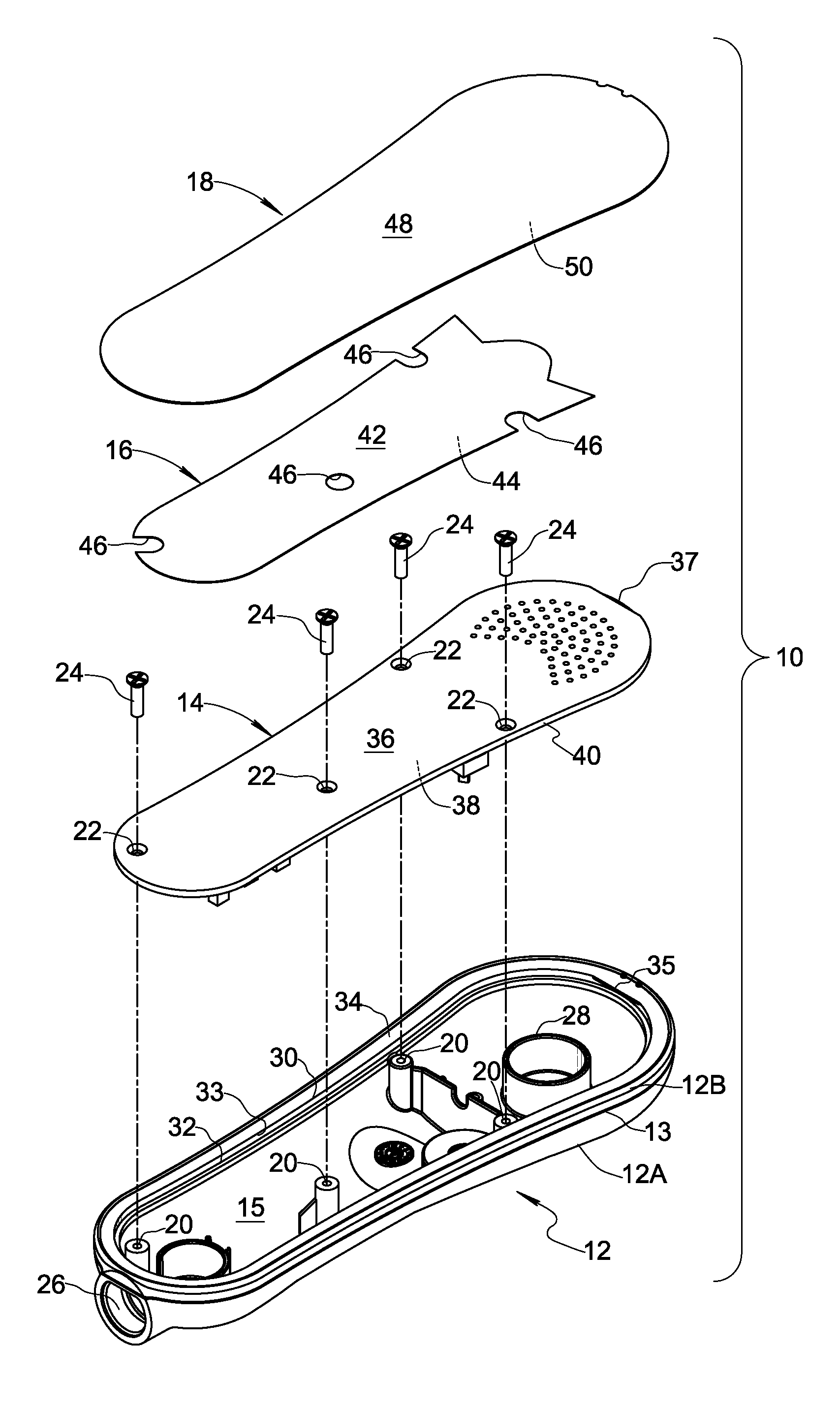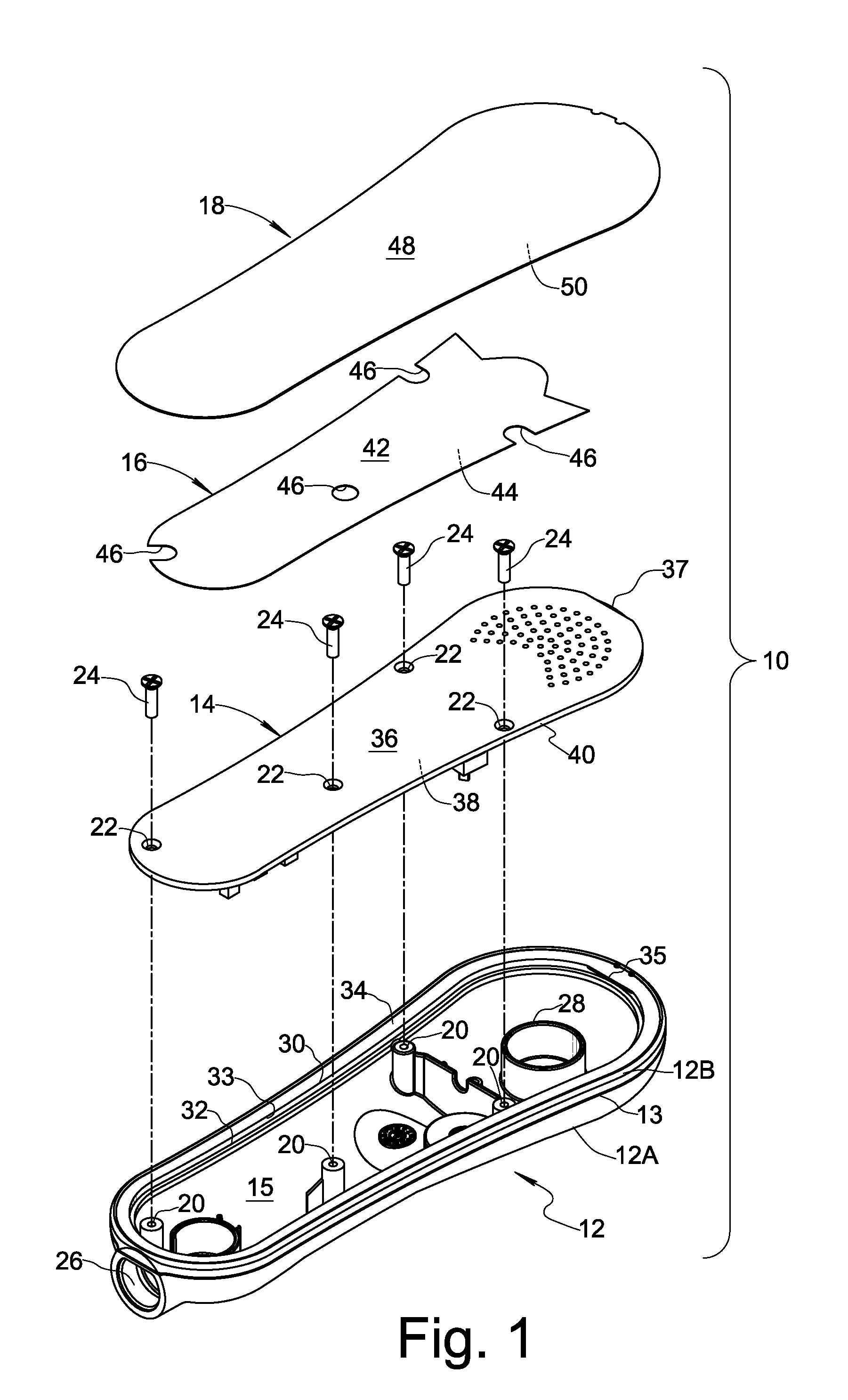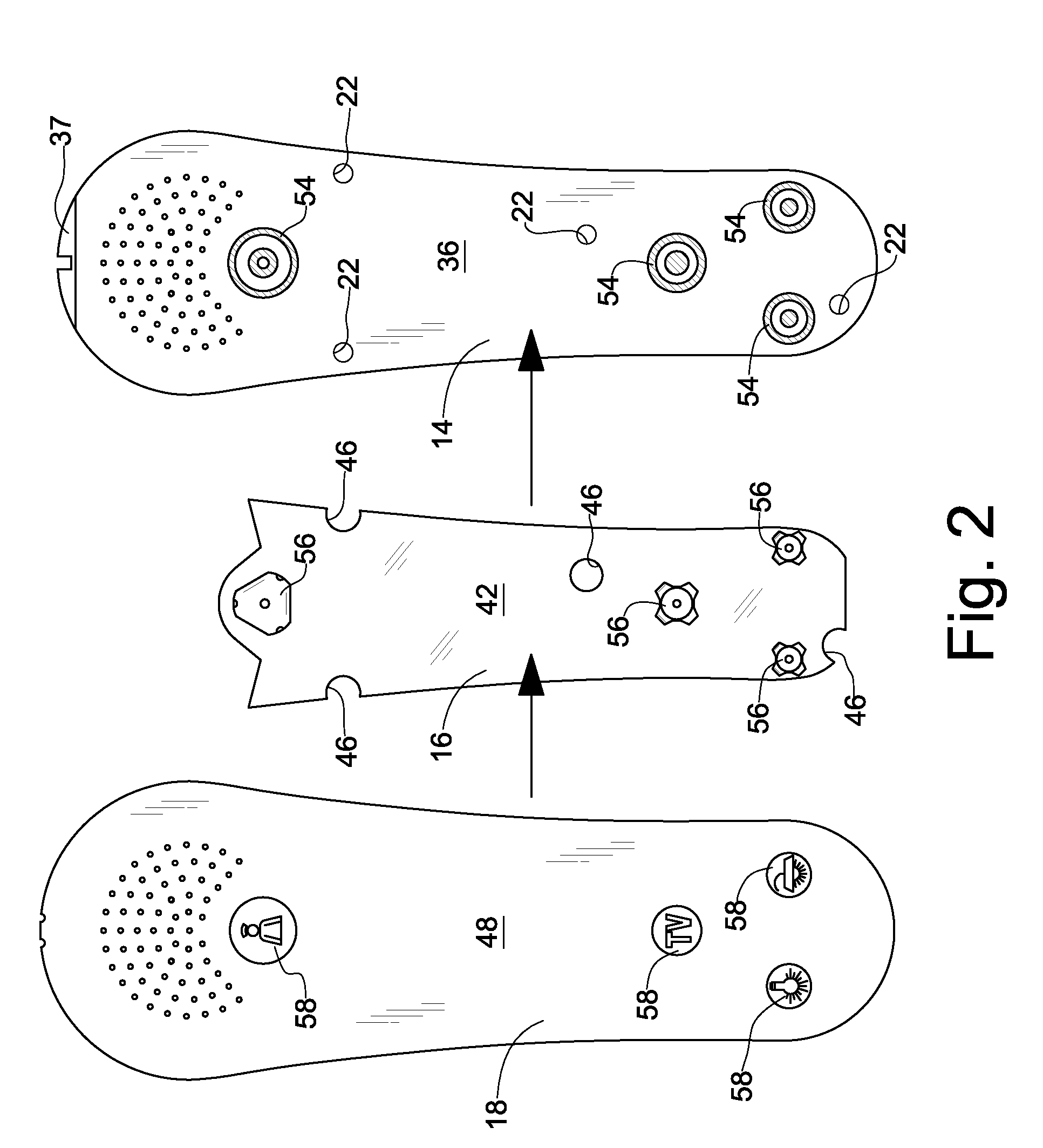Electronic Device Used In A Health Care Setting
- Summary
- Abstract
- Description
- Claims
- Application Information
AI Technical Summary
Benefits of technology
Problems solved by technology
Method used
Image
Examples
Embodiment Construction
[0017]FIG. 1 shows, in exploded view, a pillow speaker 10 formed in accordance with an embodiment of the present invention. Pillow speaker 10 is an electronic device for use in a health care setting, such as a hospital, nursing home, clinic, or similar environment. While the present invention is described with respect to a pillow speaker, it will be understood that other types of electronic devices used in health care settings may be constructed as taught herein. Examples of other types of electronic devices to which the present invention may be applied include, without limitation, handheld pendants, bed rails, wall plates, and call cords where a user interface is required.
[0018]Pillow speaker 10 generally comprises a rigid shell 12, a rigid PCB 14, a dome layer 16, and an overlay 18. Shell 12 defines an interior space 15 and an opening 30 communicating with the interior space. Shell 12 may include a plurality of fastener receptacles 20, a cord passageway 26 through which wires may ...
PUM
| Property | Measurement | Unit |
|---|---|---|
| Thickness | aaaaa | aaaaa |
| Adhesivity | aaaaa | aaaaa |
Abstract
Description
Claims
Application Information
 Login to View More
Login to View More - R&D
- Intellectual Property
- Life Sciences
- Materials
- Tech Scout
- Unparalleled Data Quality
- Higher Quality Content
- 60% Fewer Hallucinations
Browse by: Latest US Patents, China's latest patents, Technical Efficacy Thesaurus, Application Domain, Technology Topic, Popular Technical Reports.
© 2025 PatSnap. All rights reserved.Legal|Privacy policy|Modern Slavery Act Transparency Statement|Sitemap|About US| Contact US: help@patsnap.com



